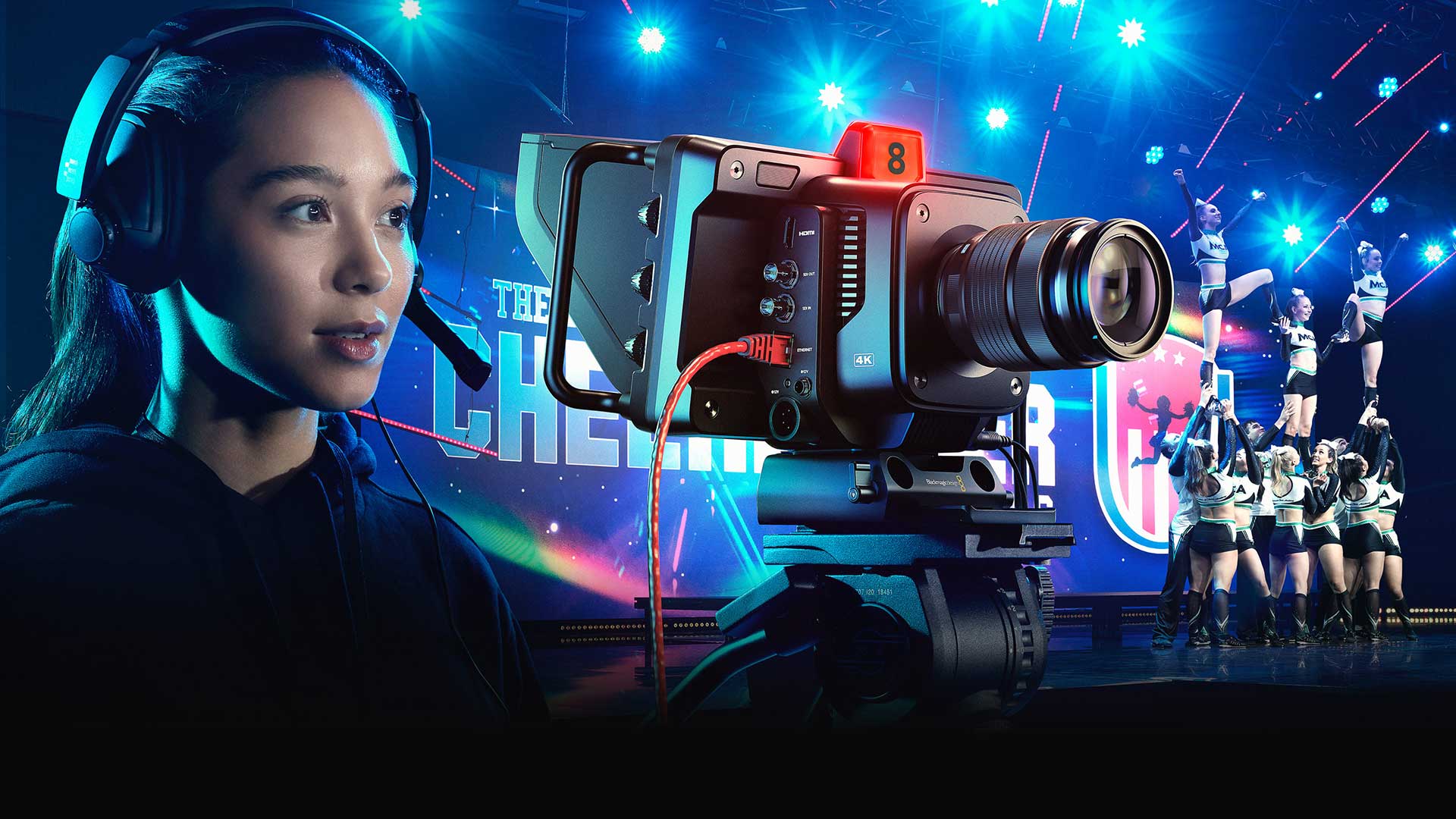
Blackmagic Design has been hard at work producing a new line of 4K Studio Cameras, a new HyperDeck Studio.
Studio Cameras 4K
BMD had a big day yesterday, so let’s begin with the cameras. The Studio line of cameras from BMD hasn’t been updated in quite some time and there has been some discussion as to whether they would ever be updated. We have our answer now, and the company has produce two new 4K models, the 4K Plus and the 4K Pro.
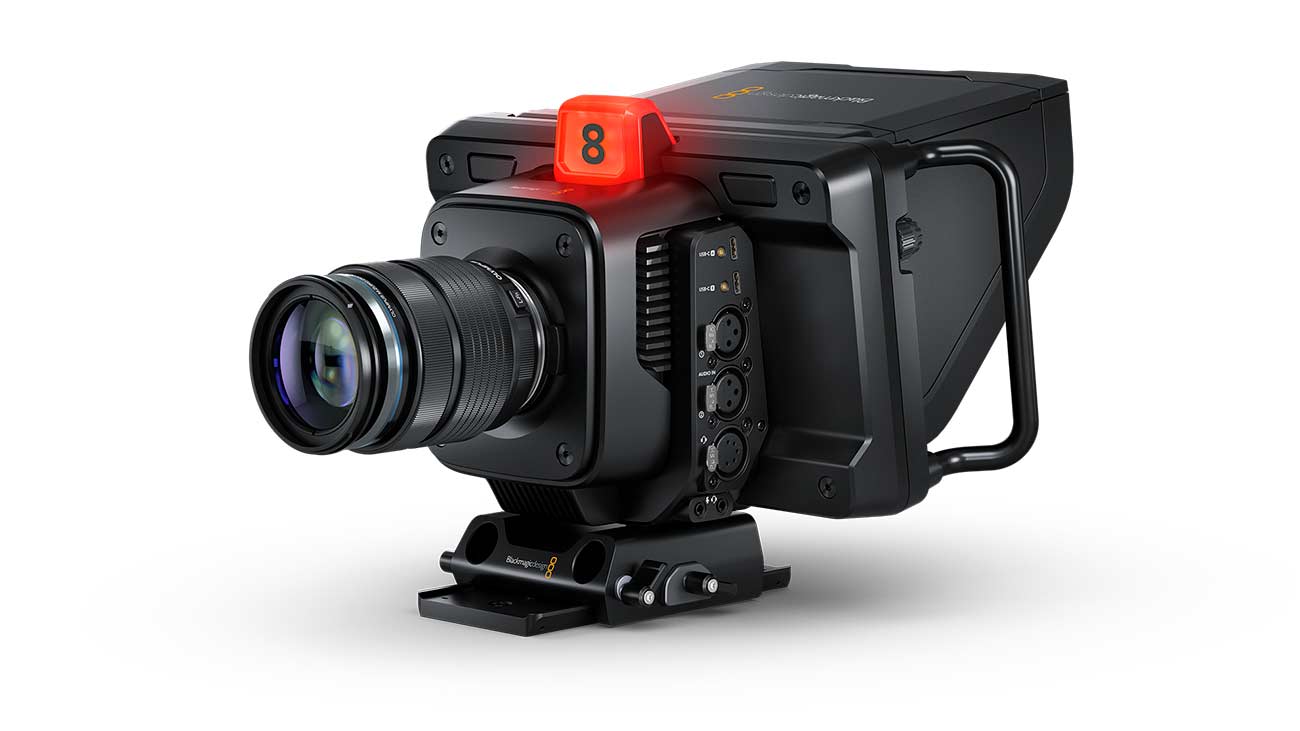
Blackmagic Studio Camera 4K Pro. Image: Blackmagic Design.
The cameras retail from US$1295 and are available now. BMD states that the new devices have the same features as large studio cameras, but in a more portable design. They feature the well renowned gen 5 colour science that Blackmagic is known for and they can go from -12db (ISO100) through to +36db (ISO25,600). It’s good to see db being used here, since that is, after all, the correct terminology for a digital video camera!
Other features include talkback functionality, a large tally light, built in colour corrector, and Blackmagic RAW recording to USB disks. It comes with a 7” display with side handles to make all day use comfortable. This touch screen can be used for camera settings, and can also have its brightness, contrast, and focus peaking adjusted using physical knobs.
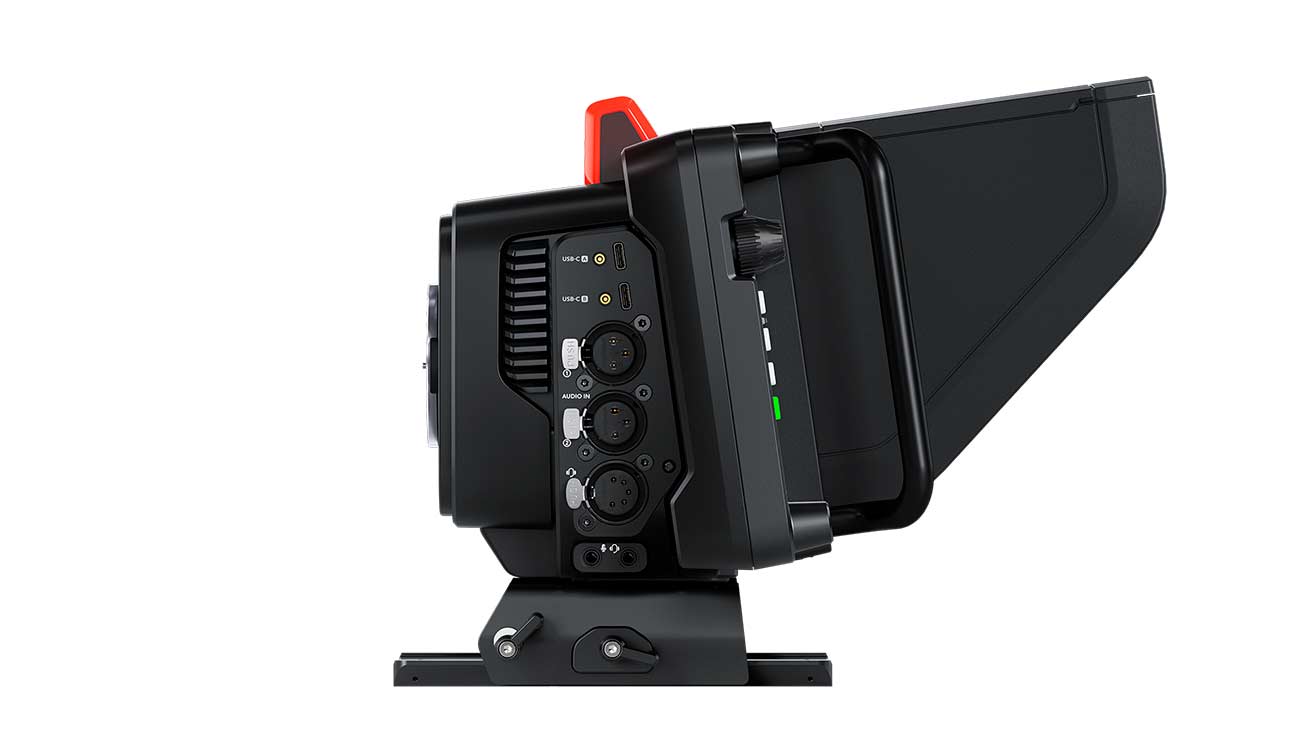
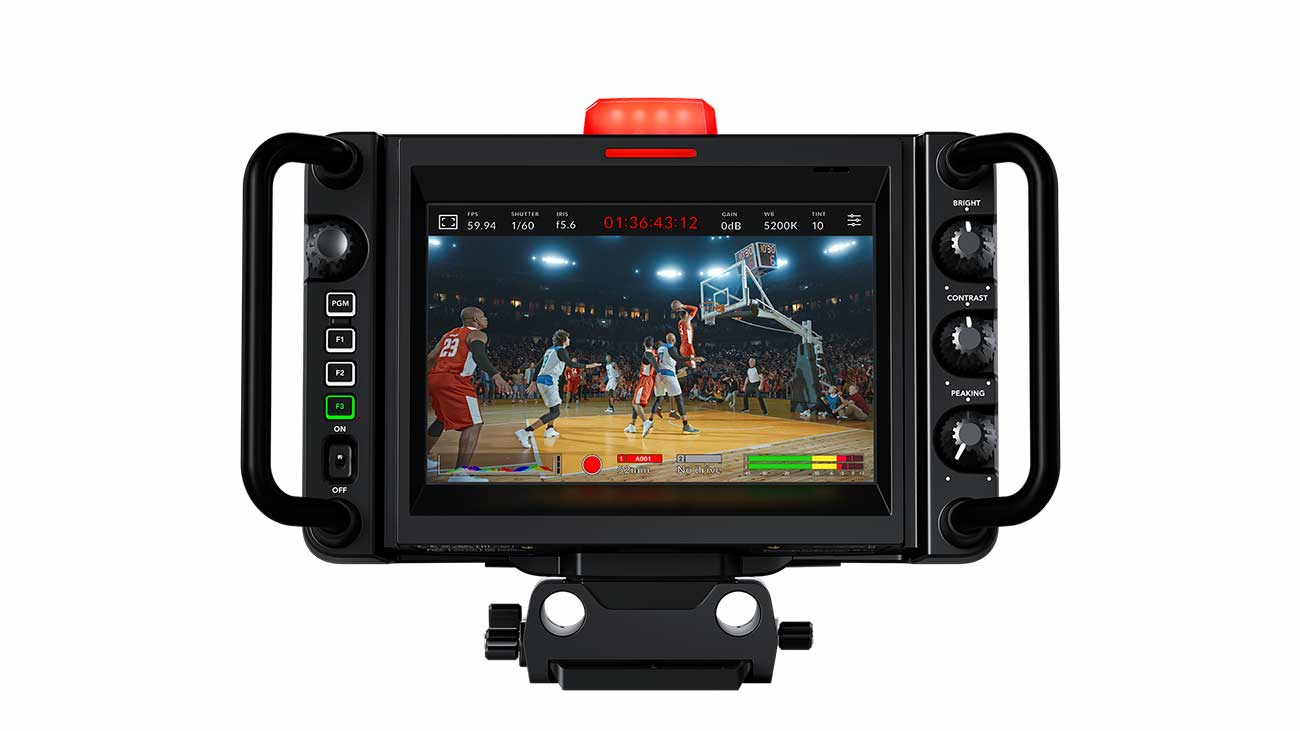
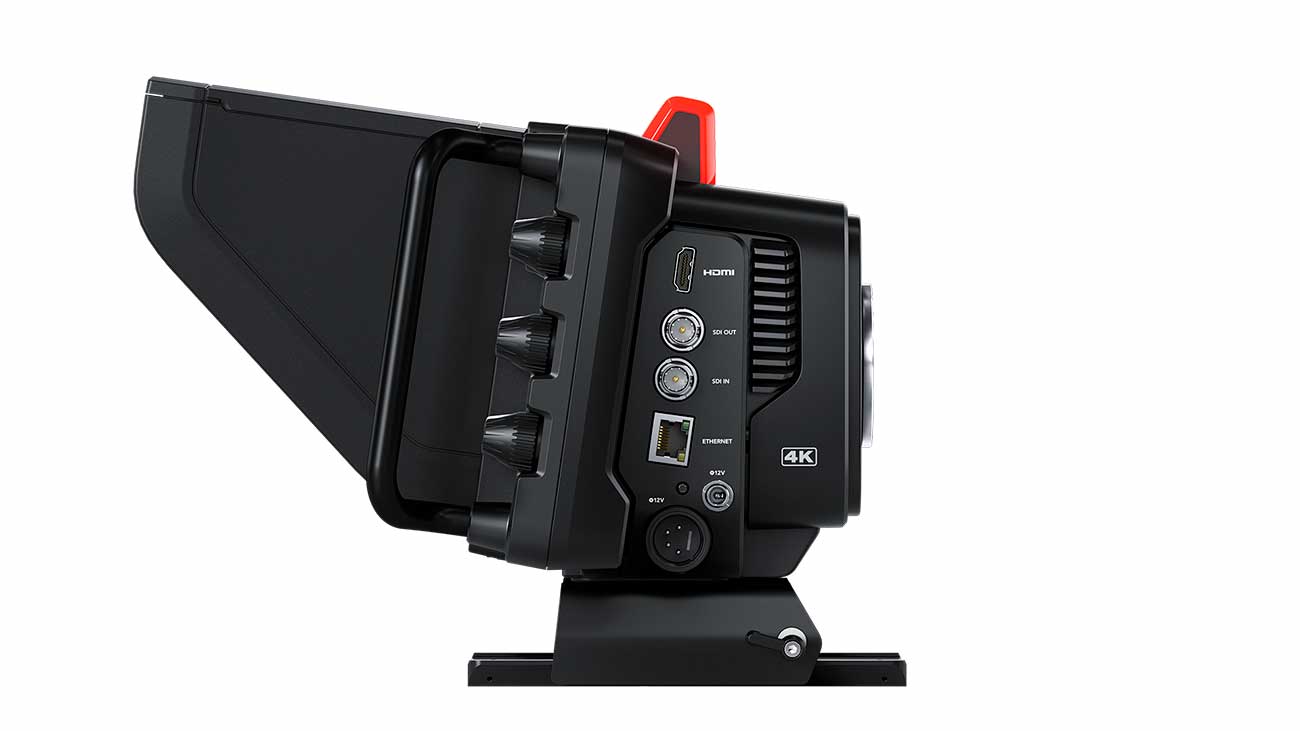
Images: Blackmagic Design.
The camera uses an MFT style lens mount, but BMD have given the option of focus and zoom demands, which can be operated from the tripod handles with compatible lenses. Of course the one limitation of using compatible stills lenses in such a way is that they are generally not parfocal. In other words if you zoom into something and then zoom out again they will not hold focus. But this type of control will be useful with dedicated video lenses.
Other features with the Pro verison include SDI with talkback and a standard 5 pin talkback XLR connection for headsets. The Pro version of the camera also features 12-G SDI, 10GBASE-T Ethernet. The latter providing video, tally, talkback, and camera power through a single socket.
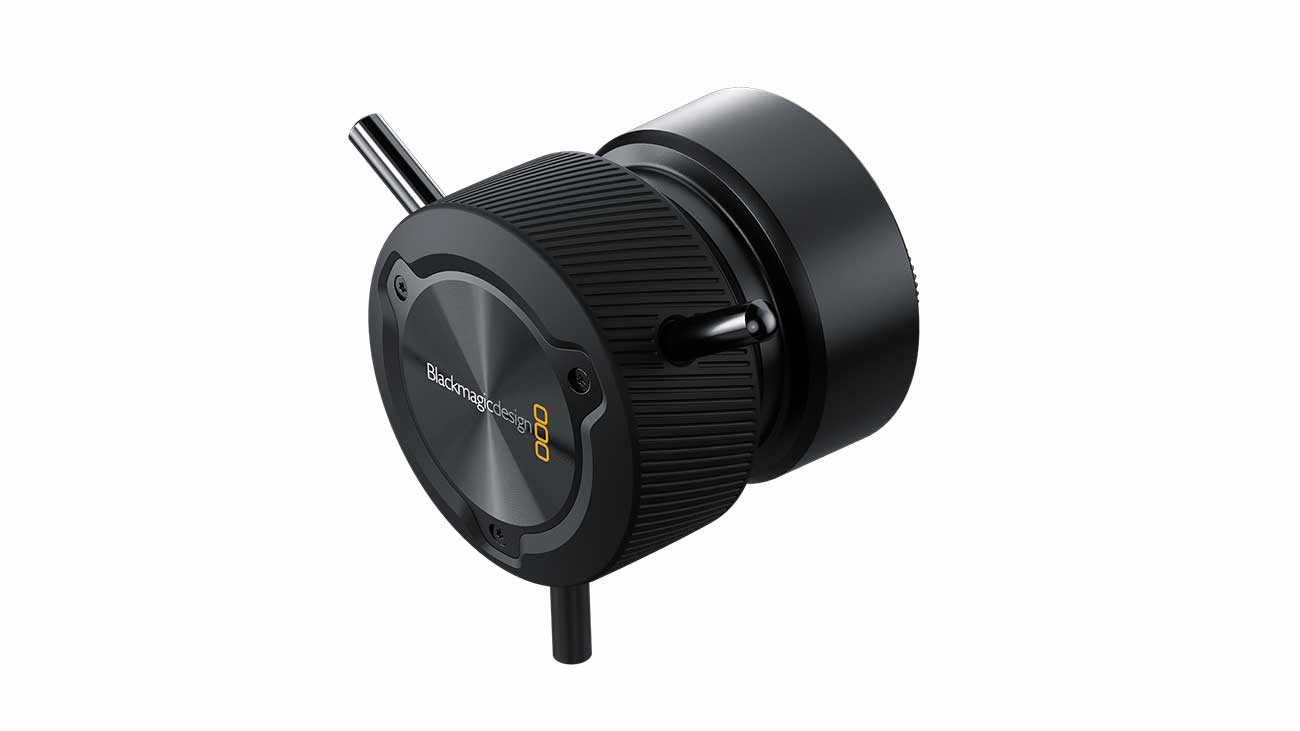
Blackmagic Studio Camera focus demand control. Image: Blackmagic Design.
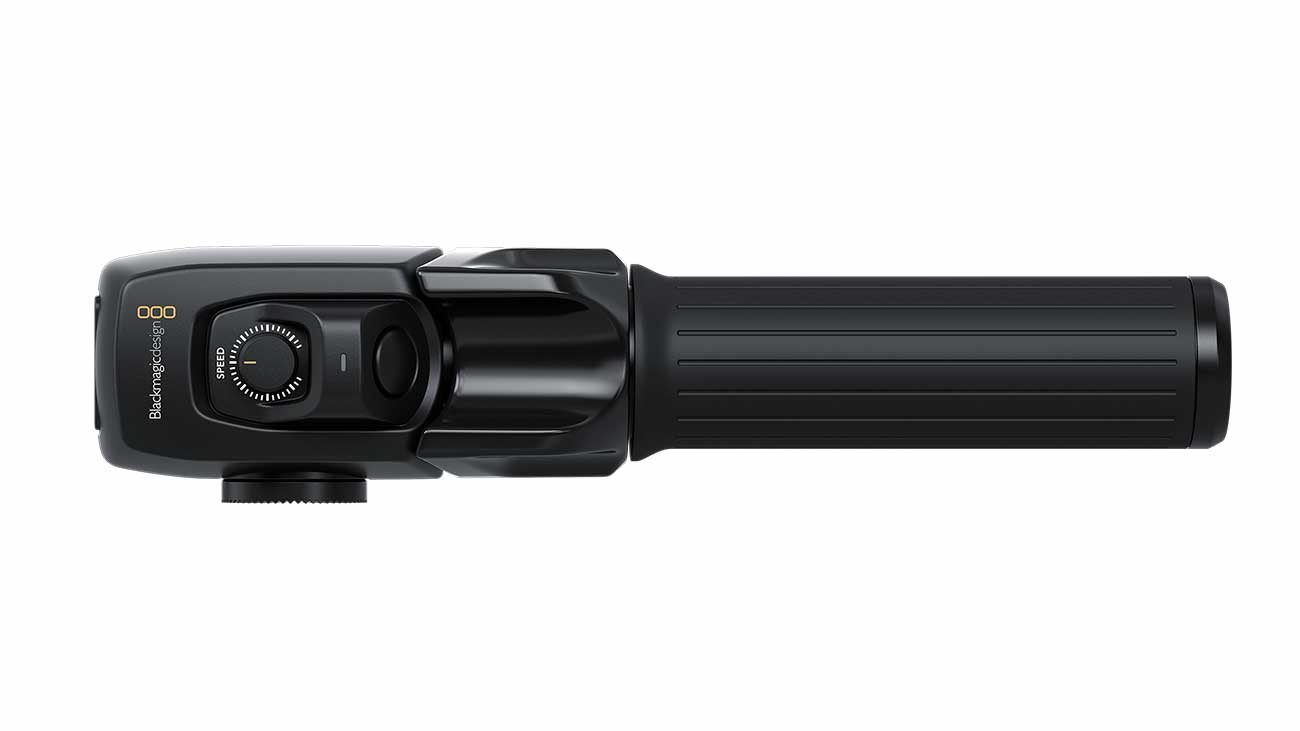
Blackmagic Studio Camera zoom demand control. Image: Blackmagic Design.
Blackmagic is providing the ethernet connection between cameras as a direct and far less expensive alternative to SMPTE fibre. The Blackmagic Studio Converter deals with video conversions at the switcher end as well as adding power to the ethernet cable.
The Studio Camera Pro’s XLR inputs support +24dBu line level with 48v phantom power support with an equivalent input noise of -131dBv(A). A/D converters are specced at 117dB, which should result in some very low noise audio recording. Power comes via either a lockable 12v DC connector or through Ethernet.
Blackmagic Studio Camera 4K specifications at a glance
- Designed specifically for live production.
- Carbon fiber reinforced polycarbonate chassis.
- Up to 25,600 ISO for incredible low light performance.
- Native 4K sensor with 13 stops of dynamic range.
- Compatible with a wide range of popular MFT lenses.
- Large 7 inch high brightness viewfinder.
- Includes 12G -SDI, HDMI, 10G Ethernet connections.
- Single 10G Ethernet allows SMPTE fiber style workflow.
- USB-C port allows recording directly to external disks.
- Features incredible quality Blackmagic RAW recording.
- Built in stereo microphones with wide separation.
- Professional mini XLR inputs with 48 volt phantom power.
- Includes tripod mount for quick location setup.
- Powers by 12V or Ethernet connection.
- Optional focus and zoom demands for lens control.
- Blackmagic Studio Converter allows all connections via Ethernet
Find out more about the Blackmagic Design Studio Cameras 4K on the Blackmagic Design website.
HyperDeck Studio
Blackmagic has also been hard at work redesigning the HyperDeck Studio recorders. There are now four different models of the system. The 3G-SDI Mini, which can record and play H.264, ProRes or DNxHD files onto SD cards or external USB drives up to 1080p/60. The HD Plus model, which has better transport controls, front panel headphone, speaker and 6G-SDI with fill and key out. This model also features SDI monitoring and can record H/264 up to 1080/60p or ProRes and DNxHD up to 2160/30p. A full rack HD Pro model is pretty much the same as the HD Plus, but with the addition of two SSD slots and a machined metal search dial with clutch mechanism. Finally there’s the 4K Pro, which will record H.264, H.265, ProRes, and DNxHD in any resolution from SD through to UHD up to 2160/60p.
The HyperDeck Studio models all feature traditional deck style controls such as a jog, shuttle, and scroll dial, audio meters that are selectable between VU or PPM. When recording via SDI the systems can handle 16 audio channels, and can also display all of these meters simultaneously.
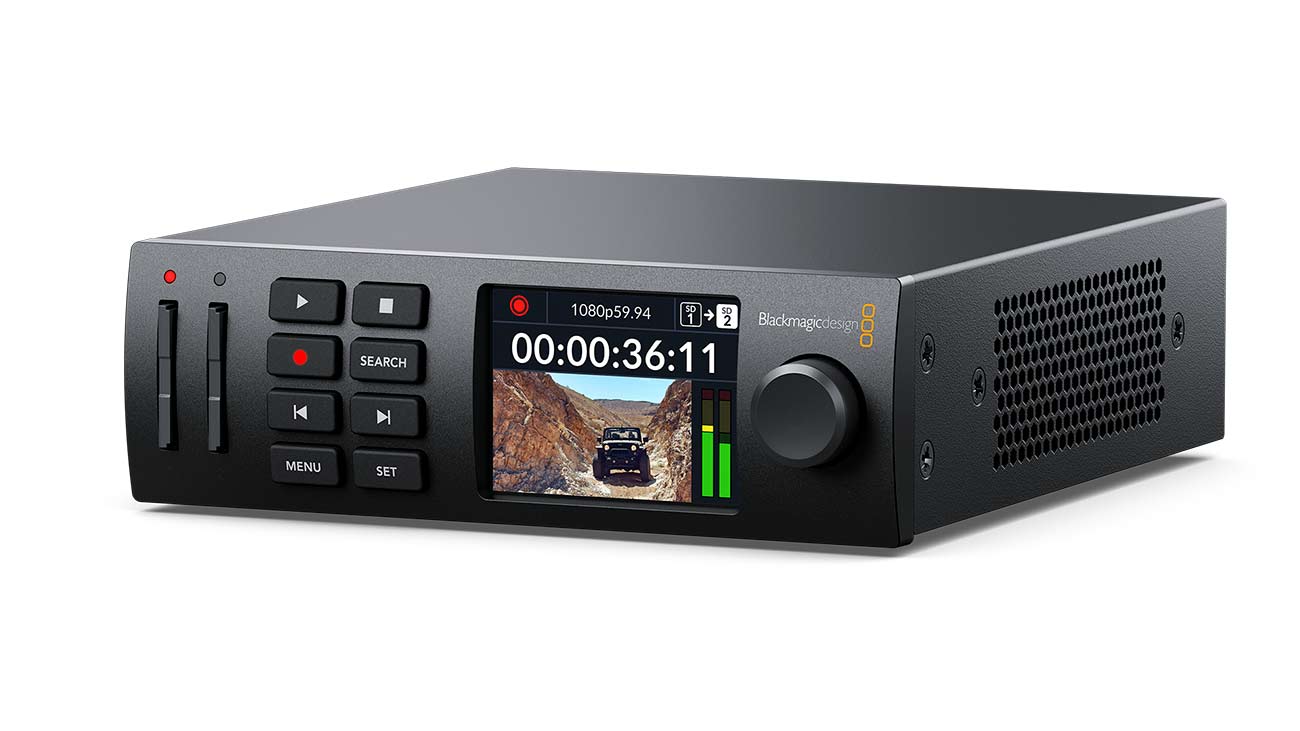
HyperDeck Studio HD Mini. Image: Blackmagic Design.
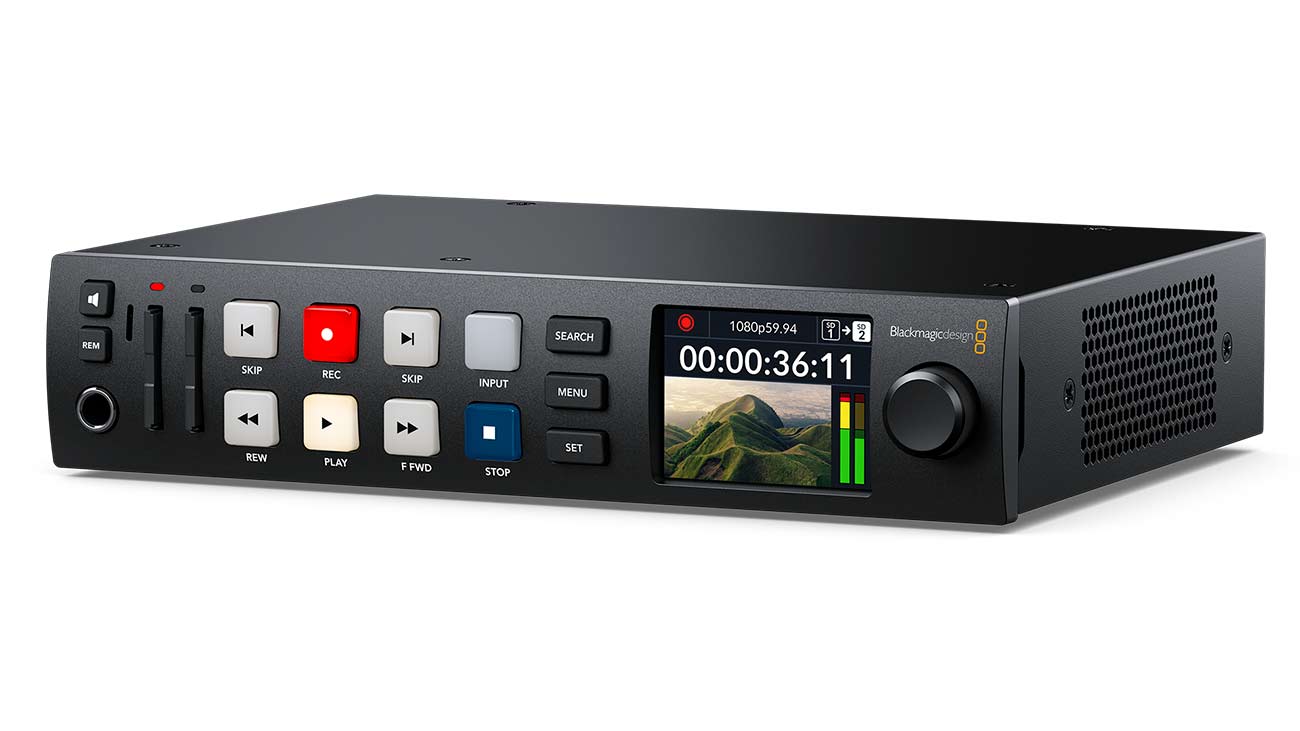 HyperDeck Studio HD Plus. Image: Blackmagic Design.
HyperDeck Studio HD Plus. Image: Blackmagic Design.
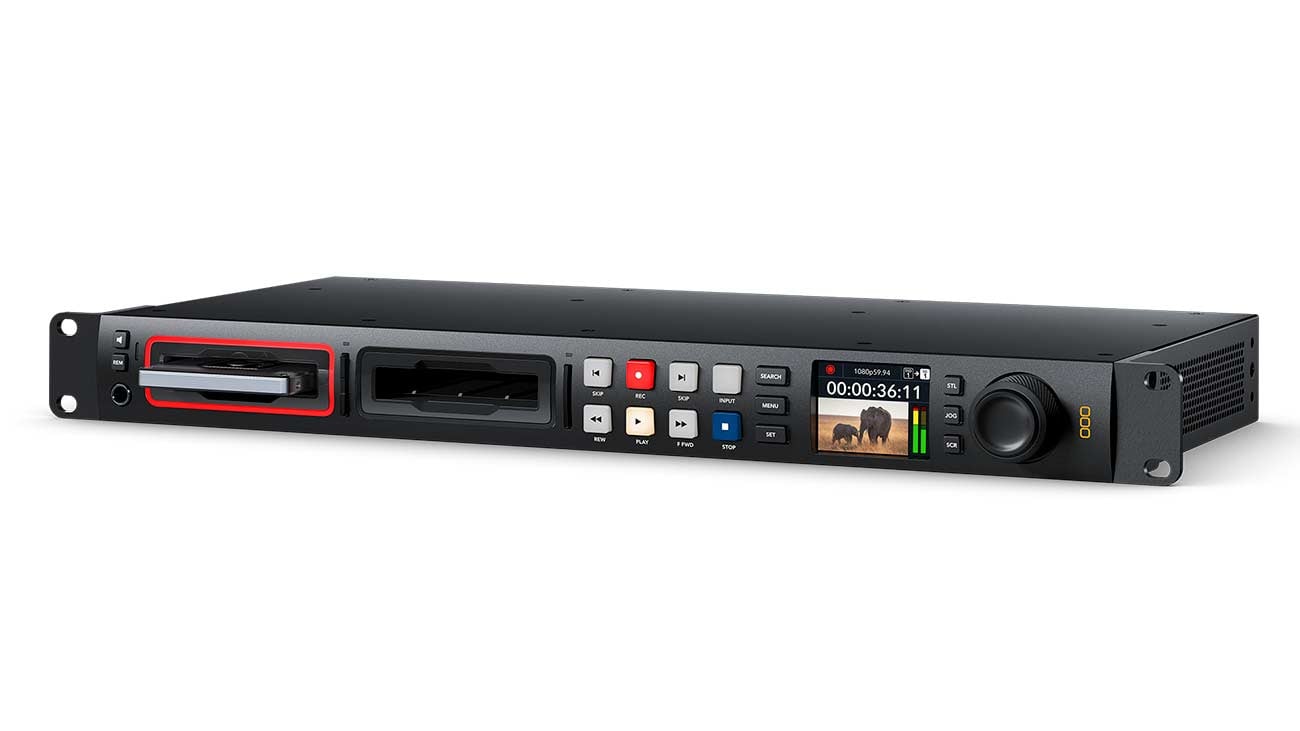 HyperDeck Studio HD Pro. Image: Blackmagic Design.
HyperDeck Studio HD Pro. Image: Blackmagic Design.
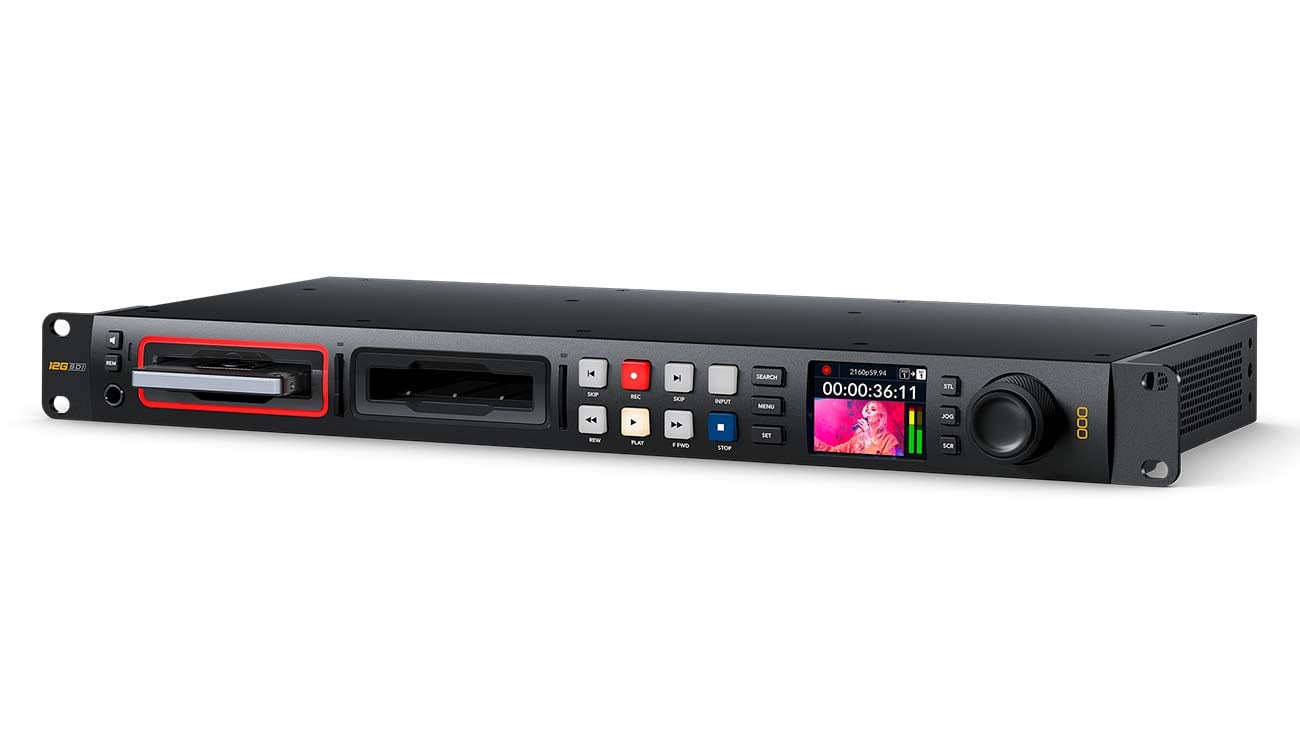
 HyperDeck Studio 4K Pro. Image: Blackmagic Design.
HyperDeck Studio 4K Pro. Image: Blackmagic Design.
When users require smaller files they can all record H.264 in quality levels up to 10-bit 4:2:2 colour precision, whilst the 4K model will record in H.265 for the higher resolutions. Users can choose to record PCM audio or AAC, and all models support ExFAT and HFS+ disk formats. The Plus and Pro models can record ProRes 4444 to allow for full alpha output for fill and key playback.
The devices will automatically detect HDR input and will meta tag such footage accordingly. PQ and HLG formats are handled according to the ST2084 standard. The Plus and the Pro models additionally let users upload their own custom monitoring LUTs.
To aid recording reliability with SD cards there’s an optional M.2 flash disc that can be added to the Pro model to eliminate any risk of footage dropouts. This cache system also enables users to record high bitrate footage even to media that is rate too slow to do so. Lastly, when a card fills up, the M.2 drive will continue to record, so there should be minimal risk of lost footage occurring.
A timecode and sac generator is built into all models, and they can be stacked for multi-channel recording or for digital signage. There are dedicated outputs for reference and timecode.
HyperDeck Studio features at a glance
- New elegant design in 4 different models.
- Built in color LCD with deck status.
- Dual media card slots allow non stop recording.
- Records standard H.264/5, ProRes and DNx files.
- Supports latest broadcast technology connections.
- Choose 3G-SDI, 6G-SDI or 12G-SDI models.
- USB looks like a webcam allowing support for all video software.
- Advanced HDR support into recorded files.
- Professional multi channel digital audio.
- Built in timecode and sync generators for ISO recording.
- Localized for 11 popular languages.
- Supports all popular editing and VFX software.
- Compact models only 1/3rd of a rack unit wide
The HyperDeck Studio range is available from US$495. Find out more on the Blackmagic Design website.
Tags: Production Studio & Broadcast News


Comments